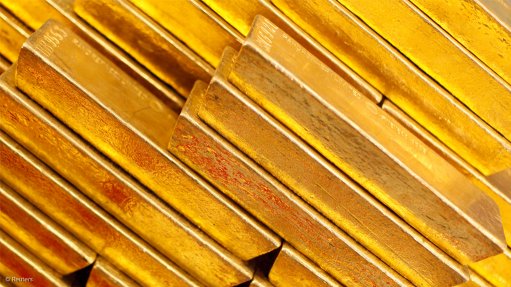
Photo by: Reuters
TORONTO (miningweekly.com) – Gold’s first-quarter performance this year was its best in nearly three decades, as its 17% gain made it one of the best-performing commodities after outperforming other major stock, bond and commodity indices.
Buoyed by market uncertainty and expansionary monetary policies, and combined with an analysis of previous bull-bear cycles, the World Gold Council (WGC) reported in its latest market update, titled Gold Outshines the market in Q1 2016, that gold might be entering a new bull market.
The WGC stated that an analysis of previous bull/bear market cycles was encouraging. Gold had experienced five bull markets and five subsequent bear markets since the 1970s. Previous bear markets (excluding the current one) had a median length of 52 months, during which the price of gold declined between 35% and 55%.
As of December 2015, gold’s price pullback was already in line with the median length and magnitude of these previous bear markets, the WGC advised.
The council also noted that two consecutive quarters of strong return had typically resulted in a more sustained rally.
“So far, we have had one very strong quarter. But inflows into gold look, to us, set to remain robust in [the] second quarter, as the current macroeconomic environment remains supportive for both investment and central bank demand,” the WGC stated.
Gold’s price had also increased in the major trading currencies, rising by 11%, 20% and 9% in euro, British pound and Japanese yen terms, respectively. It was up 16% on the Chinese renminbi and Indian rupee terms, and 12% in Turkish lira.
PRICE SUPPORT
According to the WGC, the rally in the gold price was being supported by five key factors, including ongoing concerns about economic growth and financial stability in emerging markets; a hiatus in the rise of the US dollar; the implementation of negative interest rate policies by several large global central banks; the return of pent-up investment demand for gold; and price momentum stemming from investors following gold’s upward trend.
The WGC noted that the gold price had benefited from strong investment inflows. Combined sales of 22 ct (Eagles) and 24 ct (Buffalos) gold coins by the US Mint, increased 51% year-on-year in the first quarter, while gold-backed ETFs had the second-strongest quarter on record, with demand from the US, Europe and China and other regions rising by a combined 363 t.
The market update also found that net long positions on COMEX, the world’s largest gold futures exchange, had its largest quarterly average increase since the fourth quarter of 2009. Anecdotal evidence suggested that, in contrast to increases in investment flows in the recent past, investor interest was broader-based, coming from both retail and institutional investors.
Further, according to the organisation, the interconnectedness of global financial markets had increased the likelihood of successive economic crises and market contagion. The prolonged presence of low (even negative) interest rates had fundamentally altered the way investors think about risk, the report noted.